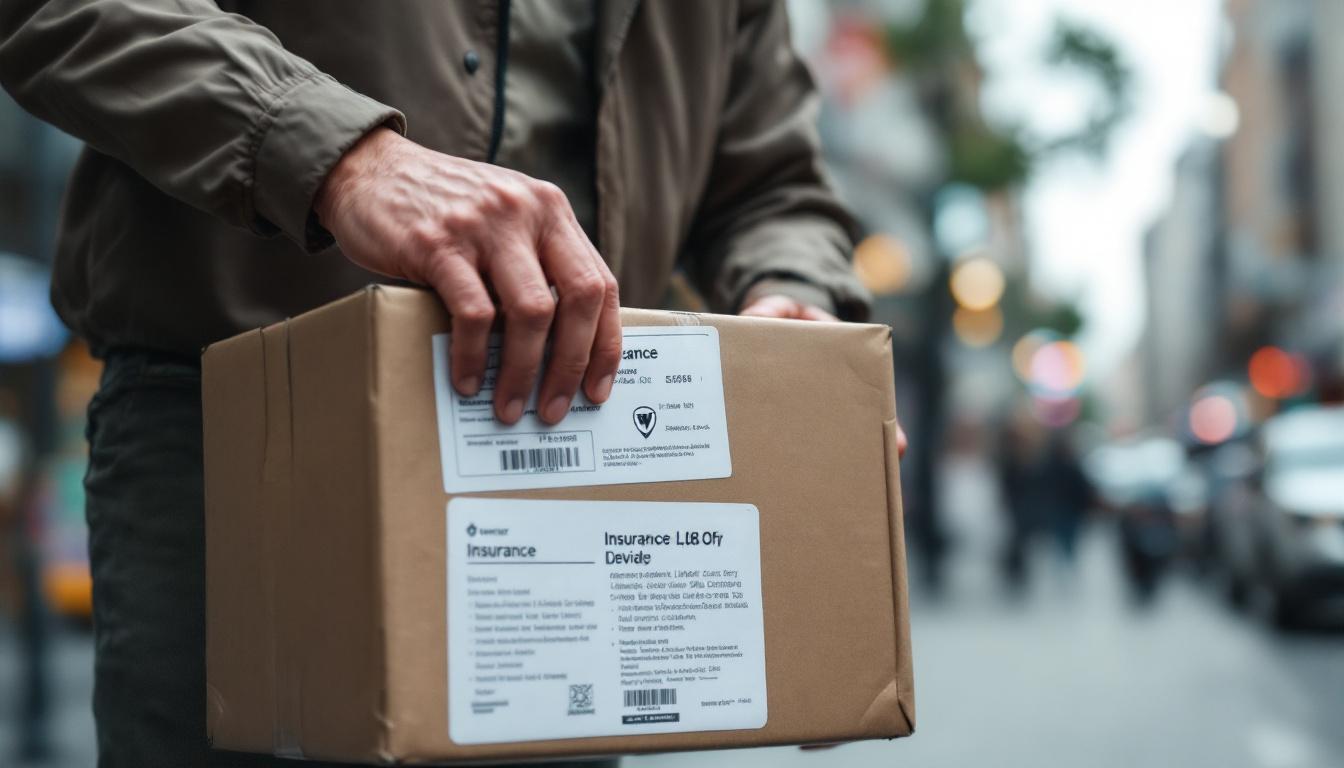Hand carry delivery services have become increasingly popular, especially for those who need to send important documents or packages quickly and securely. However, the cost of these services can vary significantly based on a variety of factors. Understanding these factors can help individuals and businesses make informed decisions when choosing a delivery service. This article explores the key elements that influence the pricing of hand carry deliveries.
Distance and Destination
One of the most significant factors affecting the price of hand carry delivery is the distance between the pickup and drop-off locations. Generally, the farther the distance, the higher the cost. This is due to increased transportation expenses and the time involved in completing the delivery. Additionally, longer distances may require more complex logistics, including the need for specialized vehicles or routes, which can further drive up costs. The efficiency of the delivery process can also be impacted, as longer routes may face delays due to traffic conditions, road work, or other unforeseen circumstances.

Local vs. International Deliveries
Local deliveries typically incur lower costs compared to international ones. For local hand carry deliveries, the logistics are simpler, and the delivery can often be completed within a few hours. In contrast, international deliveries involve customs regulations, potential tariffs, and longer transit times, all of which contribute to higher prices. Furthermore, international shipments may require additional documentation and compliance with various international shipping laws, which can complicate the process and add to the overall cost. The need for insurance and tracking services is also more pronounced in international deliveries, as the stakes are higher when sending valuable items across borders.
Urban vs. Rural Areas
The geographical location also plays a crucial role in pricing. Deliveries to urban areas may be less expensive due to the availability of more delivery options and infrastructure. In contrast, rural deliveries can be costlier due to the limited availability of services and longer travel times required to reach these locations. Urban areas often benefit from a dense network of courier services, allowing for competitive pricing and faster delivery times. Moreover, the presence of major transportation hubs in cities can facilitate quicker logistics, reducing the overall cost of delivery. On the other hand, rural areas may face challenges such as fewer delivery personnel and longer distances between stops, which can lead to increased operational costs for delivery companies. This disparity highlights the importance of considering geographical factors when planning hand carry deliveries, as they can significantly influence both cost and efficiency.
Weight and Size of the Package
The weight and dimensions of the package being delivered are critical factors in determining the cost of hand carry delivery. Heavier and larger packages typically require more resources for transportation, which can drive up the price. Additionally, the logistics involved in handling bulkier items often necessitate specialized equipment and more labor, further contributing to the overall expense. Understanding these dynamics can empower shippers to make more informed decisions about their delivery options.
Dimensional Weight Pricing
Many delivery services use a pricing model known as dimensional weight pricing. This method calculates the cost based on both the weight and size of the package. If a package is large but lightweight, it may still incur higher charges due to its volume. Understanding this pricing model can help shippers optimize their packaging to reduce costs. For instance, using smaller boxes or compressing items can significantly lower the dimensional weight, leading to potential savings. Additionally, some carriers provide tools and calculators to help shippers estimate costs based on dimensional weight, making it easier to budget for deliveries.
Special Handling Requirements
Some packages may require special handling due to their fragile nature or specific delivery conditions. For example, items that need refrigeration or those that are considered hazardous materials may incur additional fees. These specialized services are designed to ensure the safety and integrity of the items being delivered, but they can significantly impact the overall cost. Furthermore, shippers should be aware that special handling may also involve additional paperwork and compliance with regulatory standards, particularly for hazardous materials. This can add another layer of complexity to the shipping process, requiring careful planning and coordination to ensure that all requirements are met.
Impact of Packaging Materials
The choice of packaging materials can also play a pivotal role in both the weight and size of the package. Lightweight, durable materials can help minimize the overall weight while providing adequate protection for the contents. For instance, opting for bubble mailers instead of traditional boxes can reduce weight and volume, potentially lowering shipping costs. Moreover, using eco-friendly packaging options not only aligns with sustainability goals but can also appeal to environmentally conscious consumers, adding an extra layer of value to the delivery service. As the demand for sustainable practices grows, shippers may find that investing in innovative packaging solutions can yield long-term benefits both financially and in terms of customer satisfaction.
Delivery Speed and Service Level
The urgency of the delivery is another critical factor that influences pricing. Hand carry delivery services often offer various options based on how quickly the package needs to arrive at its destination.

Standard vs. Express Delivery
Standard delivery options are typically more affordable, as they allow for longer transit times. In contrast, express delivery services, which promise faster delivery times, come with a premium price tag. Customers must weigh the importance of speed against their budget when choosing a delivery option.
Time-Sensitive Deliveries
For businesses that rely on timely deliveries, such as legal firms or medical facilities, the need for time-sensitive deliveries can drive up costs. These urgent requests often require dedicated resources and may involve additional fees for priority handling, making them more expensive than standard deliveries.
Insurance and Liability Coverage
When sending valuable items, many customers opt for insurance or liability coverage to protect against loss or damage during transit. This added layer of protection can significantly influence the overall cost of hand carry delivery.

Value of the Items Being Delivered
The value of the items being shipped directly correlates with the cost of insurance. Higher-value items will require more comprehensive coverage, which can increase the delivery price. Customers should assess the value of their packages and determine the appropriate level of insurance based on their needs.
Risk Assessment
Delivery services often conduct risk assessments to determine the likelihood of loss or damage during transit. Packages that are deemed high-risk may incur additional fees to cover potential liabilities. Understanding these assessments can help customers make informed decisions about whether to insure their shipments.
Seasonal Demand and Market Conditions
The time of year can have a significant impact on the pricing of hand carry deliveries. During peak seasons, such as holidays or major events, demand for delivery services often increases, leading to higher prices.
Holiday Rush
During the holiday season, many delivery services experience a surge in demand. This increased volume can lead to higher prices as companies adjust their rates to manage the influx of packages. Customers planning to send items during these busy times should anticipate potential price hikes and plan accordingly.
Market Competition
Market conditions also play a role in pricing. In regions with multiple delivery service providers, competition can drive prices down, while areas with limited options may see higher rates. Customers should research available services and compare prices to find the best deal.
Type of Delivery Service Chosen
The type of hand carry delivery service selected can significantly impact the overall cost. Various services cater to different needs, and understanding these options can help customers choose the most cost-effective solution.
Courier Services
Courier services are often the go-to choice for hand carry deliveries. These companies specialize in fast and reliable delivery, but their prices can vary based on the level of service provided. Some couriers offer additional features such as real-time tracking or guaranteed delivery times, which can affect the overall cost.
Freight Forwarders
For larger shipments, freight forwarders may be a more economical option. While they typically handle bulk deliveries, they can also provide hand carry services for specific items. Customers should evaluate their shipping needs and consider whether a freight forwarder might offer a better rate for larger or heavier packages.
Customer Service and Support
The level of customer service provided by a delivery company can also influence pricing. Companies that offer exceptional support and communication may charge higher rates, but the added value of reliable service can justify the cost.
Availability of Support
Having access to customer support during the delivery process can be invaluable, especially for time-sensitive shipments. Companies that provide 24/7 support or dedicated account managers may charge a premium for their services, but the peace of mind they offer can be worth the investment.
Feedback and Reputation
Customer reviews and feedback can also impact pricing. Well-established companies with positive reputations may charge higher rates due to their reliability and proven track record. Conversely, newer or less reputable companies may offer lower prices to attract customers but could lack the same level of service.
Payment Methods and Fees
The payment method chosen can also affect the overall cost of hand carry delivery. Different payment options may come with varying fees, and customers should be aware of these potential costs when selecting a service.
Credit Card Fees
Some delivery services may charge additional fees for credit card payments, as processing these transactions can incur costs for the company. Customers should check for any hidden fees associated with their preferred payment method to avoid surprises at checkout.
Membership and Loyalty Programs
Many delivery companies offer membership or loyalty programs that provide discounts and benefits for frequent users. Participating in these programs can help customers save money on their hand carry deliveries, making it worthwhile to explore available options.
Conclusion
Understanding the various factors that impact the price of hand carry delivery is essential for making informed decisions. From distance and package size to delivery speed and customer service, each element plays a role in determining the final cost. By considering these factors, individuals and businesses can choose the most suitable delivery service for their needs while managing their budgets effectively.
As the demand for hand carry delivery services continues to grow, being aware of these influencing factors can help customers navigate the complexities of pricing. Whether sending important documents or valuable items, making informed choices can lead to a more satisfactory delivery experience.


